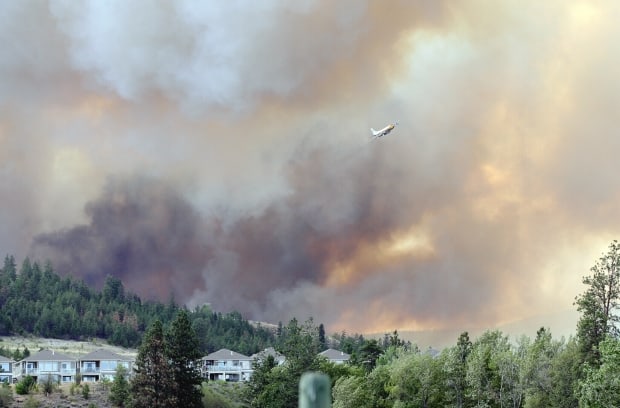
Photograph by: Bruce Edward
Gil found this post and was looking for the thread on fire costs, but I thought it was worthy of a separate post. I think it’s interesting because they have more industry and management, and the policy barriers they see are completely different from ours. Yet, they face the same problem of it taking money to treat landscapes and fight fires.
Here is the link and below is an excerpt:
Other jurisdictions in North America are going through similar exercises in cost-cutting of prevention activities in an attempt to rein in public spending. Not surprisingly, this short-sighted approach has the opposite effect of the one intended when it comes to the cost of wildfires.
First of all, wildfires cost much more than we have long thought. British Columbia taxpayers spend, on average, approximately $140 million on fire suppression (even though the province only budgets $65 million every year). Researchers throughout North America have looked at all the other costs associated with an individual wildfire, such as home and business losses, erosion mitigation, human health and damage to natural resources, and found that actual costs can range from two to 60 times the suppression cost.
On one particular wildfire in California the fire suppression bill was only $48 million while the total bill, which can often take a decade or more to realize, was $1.2 billion.
Secondly, when it comes to spending money on hazard reduction activities, an ounce of prevention really is worth a pound of cure. A recent study published by Northern Arizona University concluded that investments in hazard reduction activities had a significant impact on fire behaviour and total cost.
The authors contend that hazard reduction treatments applied at the broader, landscape-scale were more desirable than treatments that are only applied in the WUI.
Researchers found that WUI-only treatments leave the landscape around communities vulnerable to large, severe, and expensive mega-fires that often result in significant social, environmental, and economic impacts.
This last point is worth discussing in the context of B.C.’s approach to reducing wildfire threat to communities.
The approach advocated by the province is to focus attention on only a narrow two-kilometre buffer around communities and within that narrow buffer on only those stands rated as high to extreme hazard of crowning (fire spreading through the tops of trees as well as along the forest surface), thus resulting in a patchwork of small, dispersed, treated and untreated stands surrounding vulnerable communities.
In contrast, other jurisdictions, such as Alberta, recommend treating the area within 10 kilometres of a community.
Another important point from the NAU study is the importance of linking areas treated versus treating a patchwork of smaller stands; exactly the opposite of the B.C. strategy, which prioritizes funding for the treatment of high- or extreme-hazard stands above all others. The B.C. strategy may be a valid for small fires that start in the WUI, can be hemmed in by a network of roads combined with some small hazard reduction treatments and be quickly attacked and suppressed by local and provincial firefighting resources.
Unfortunately, the reality is that fire behaviour and effects of large, landscape fires that make a run at communities, such as Barrier-McClure, Okanagan Mountain Park, Slave Lake, and Waldo Canyon, are little affected by small, dispersed treatments.
In fire management, we are dealing with dynamic ecological systems and a stand classified as low or moderate hazard today will eventually be classified as high or extreme hazard in the not too distant future. In other words, better to treat the whole landscape instead of just parts of it.
It’s not clear why the province’s limited approach to wildfire hazard reduction is being employed when research points to broader treatments as ultimately more effective at protecting communities and community interests on the larger landscape.
Perhaps the province is simply trying to avoid having to address two very significant policy and political issues: the province’s traditional approach to Annual Allowable Cut determination and tenure system administration.
One thing that never gets mentioned is the loss of wild life.Or how long, if ever, does it take to return.